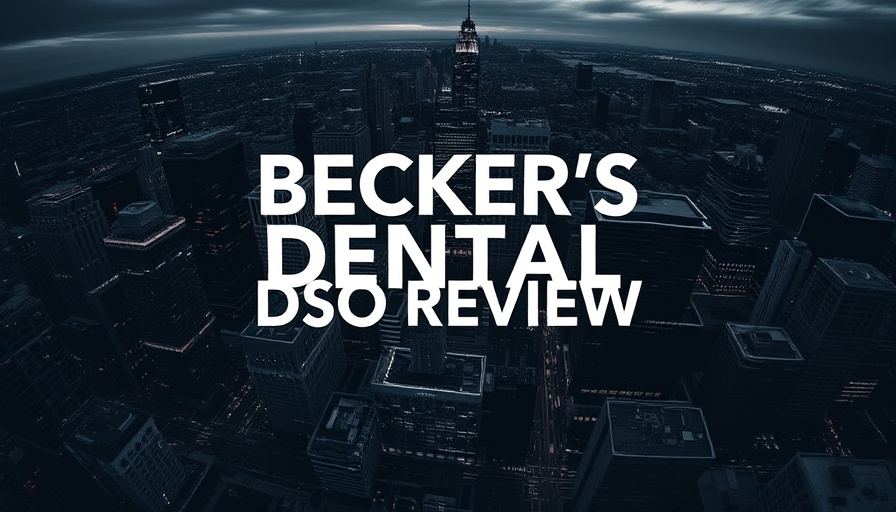
Understanding the Settlement: A Closer Look at False Claims Act Violations
A recent case involving a Connecticut dentist, Nazneen Jaffri, DDS, has sparked significant concerns in the dental community regarding ethical practices in healthcare. Jaffri has agreed to pay $150,000 to settle allegations of violating the federal False Claims Act. The core of the allegations stems from her practice of compensating a third-party patient recruiting firm $116 for each Medicaid patient referred for services beyond routine preventive care. This case highlights the complex interplay between patient recruitment and ethical practices in healthcare.
The Broader Implications: Trust in Dentistry
This incident could erode the trust between dentists and patients, particularly in Medicaid-served communities, which may already be wary of the healthcare system. With ethical practices at the core of a successful dental practice, incidents such as this can provoke mistrust and skepticism among patients. Dr. Emily Johnson, running a solo dental practice in suburban Pennsylvania, may find patients more reluctant to engage with her services due to fears surrounding healthcare integrity.
Historical Context: The Evolution of the False Claims Act
Since its inception in 1863, the False Claims Act has evolved to combat fraud against the federal government, particularly in the healthcare sector. This act incentivizes whistleblowing by allowing individuals to sue on behalf of the government to recover funds lost to fraudulent claims. The increasing frequency of settlements, like that of Dr. Jaffri's, is symptomatic of a broader trend wherein aggressive marketing tactics are continually scrutinized for legality and ethicality.
Insights from Ongoing Investigations
The Connecticut case is not an isolated event. It is the fifth settlement resulting from persistent investigations conducted by the U.S. Attorney’s Office, the Department of Health and Human Services Office of Inspector General, and the FBI. This collaborative endeavor signifies an intensified focus on rectifying unethical practices within the dental community, stressing the need for stringent compliance measures to sustain integrity in patient care.
The Future of Dental Practices: Navigating Compliance and Ethics
These developments necessitate that dental practices realign their recruiting strategies to prioritize ethical compliance over mere financial gain. Practices must safeguard their integrity by ensuring that patient referrals are based solely on the need for care rather than incentivized financial arrangements. For practitioners like Dr. Johnson, adhering to ethical standards not only protects their license but also fortifies the trust essential for a thriving practice.
What Dentists Can Learn from This Allegation
The case against Dr. Jaffri serves as a cautionary tale for dental professionals. Emphasizing adherence to ethical standards when collaborating with third-party organizations can prevent reputational damage and legal ramifications. By focusing on a patient-centered approach, dentists can cultivate loyalty and trust within their communities, which is vital for long-term success.
Concluding Thoughts: The Importance of Ethical Integrity in Dentistry
As the dental industry increasingly faces scrutiny, understanding and navigating the complexities of ethical practices are pivotal. Dentists must commit to transparency and ethics to uphold the profession's integrity and foster trust with patients. Investigations like those leading to Dr. Jaffri's settlement remind practitioners of the urgent need to review and adjust their operational practices proactively.
For dental professionals, particularly those operating within the Medicaid system, an unwavering dedication to ethical practices not only safeguards their profession but also strengthens the patient-dentist relationship. As we navigate this complex landscape, it's essential to remember that trust is the cornerstone of successful dental practice.
 Add Row
Add Row  Add
Add 




Write A Comment